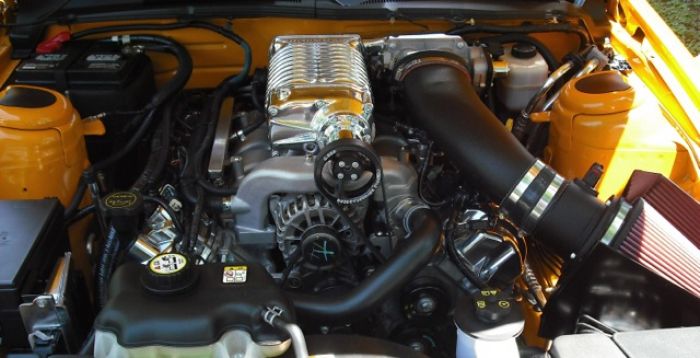When people want more speed and performance, the two available options are turbochargers and superchargers. It is important for car owners who crave for a boost of performance to understand the similarities and differences of both systems. Given the use of compressed engine block and appropriate exhaust manifold, we should be able to fit turbochargers on any type of engine. Depending on the application, the turbocharger system should be sized properly. Small turbochargers offer limited amount of boost, but faster responses. Larger turbochargers give plenty of boost, but it takes amount to build up enough boost. The turbocharger system is propelled by exhaust gas and depends on the engine temperature. The system constantly feeds of fresh oil, so we need to add some amount of high rating oil regularly.
Both superchargers and turbochargers use compressed air for their inner working mechanisms. However, superchargers can be made to fit any kind of car engine. There are two types of supercharger kits, both are driven by fan belt pulley. With a standard supercharger kit, cars may get a 50 percent increase in torque and 40 percent in horsepower. One advantage when using a turbocharging unit is the ability to use boost controllers to increase horse powers. With forced induction, turbochargers should be able to provide us with more power. However, as turbochargers produce more boost, they tend to get hotter. When the temperature increases, turbochargers will struggle to compress dense power. This could start to happen after the air pressure reach 5 psi. Detonation in turbocharging units can be prevented by adding an intercooler. Turbocharger will need to be maintained more often and car owners will also need to deal with the increased heat. After an aggressive driving, car owners should let the turbocharger unit to cool down for about 3 minutes.
Supercharger is more responsive and it is ready to provide extra boost when we are. With proper configuration, supercharger could actually help to improve fuel efficiency. This could be achieved because for the same rpm value, our engine can deliver more boost. Again, fuel efficiency will suffer if we drive aggressively. Some strain is put on our engine, especially because supercharger units are pulley driven. It takes less than 8 hours to install a supercharger, without welding or cutting required. Superchargers also don’t require too much maintenance and they last longer than turbochargers. Regardless of the type we choose, superchargers and turbochargers can deliver faster responses and more power. In general, turbochargers are more flexible and efficient, allowing us to add more upgrades. Superchargers can give us quick boost at low maintenance and it’s more appropriate for average car owners.

